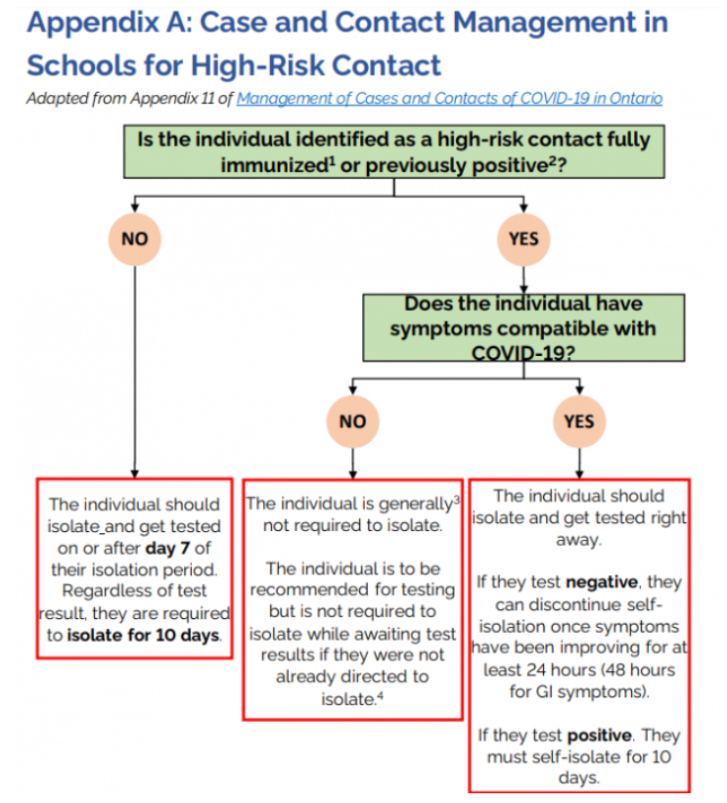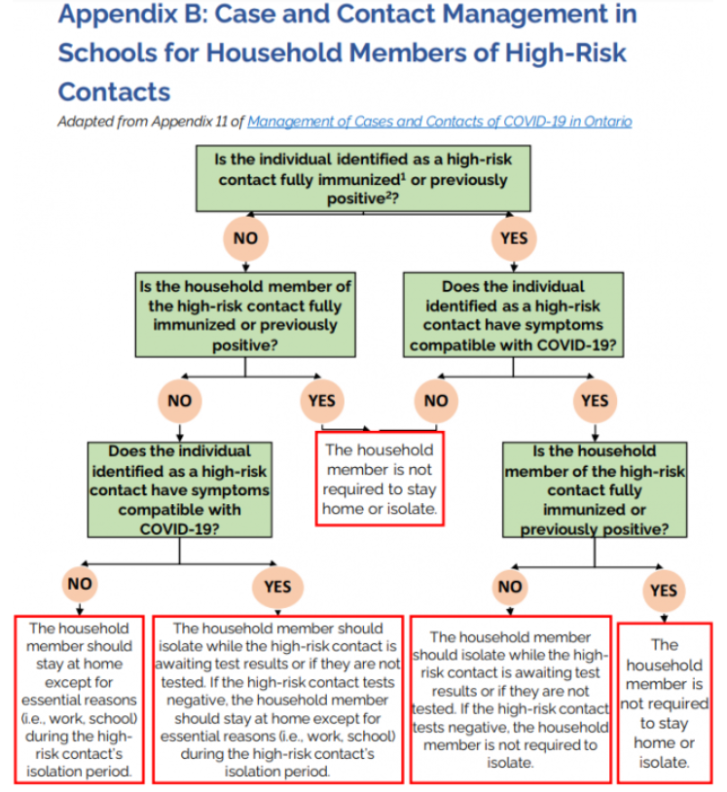This post is also available in: 简体中文 繁體中文
TORONTO — The Ontario government has released new guidelines confirming different isolation rules for vaccinated students and staff, while also outlining what may happen in the event of a COVID-19 outbreak at a school this fall.
The document, released late Wednesday morning and entitled “COVID-19 Guidance: School Case, Contact and Outbreak Management,” states that individuals who are fully vaccinated and asymptomatic are not required to isolate after a high-risk exposure to the virus.
Therefore, they do not need to be dismissed from school.

In addition, household members who live with a student that has been exposed to the virus do not need to self-isolate if they are fully vaccinated.
Those who are not fully immunized and were exposed to COVID-19 as a high-risk contact must isolate for 10 days. The guidelines indicate testing is recommended on day seven of their isolation period and the isolation should begin on the last day of the known exposure.
If a cohort contains students who are not vaccinated, or the immunization coverage is unknown, individual Public Health Units (PHU) can choose to dismiss the cohort entirely.
The province’s school guidance is in alignment with new public health guidelines, entitled “COVID-19 Fully Immunized and Previously Positive Individuals: Case, Contact and Outbreak Management Interim Guidance,” which CTV News Toronto obtained before the province’s release on Wednesday.
These new guidelines coincide with remarks the Chief Medical Officer Dr. Kieran Moore made in July, outlining that staff and students who are fully vaccinated should anticipate minimal interruptions at school if they are exposed to a high-risk contact.
In contrast, Moore said that unvaccinated individuals would have to isolate for at least 10 days and provide two negative COVID-19 tests, seven days a part, before returning to the classroom.
WHAT HAPPENS WHEN THERE IS AN OUTBREAK?
The province defines an outbreak at a school as two or more lab-confirmed COVID-19 cases among students, teachers, staff or visitors where at least one of the cases could have reasonably been acquired at the school. This also includes child-care settings and before and after school programs.
Household members should not be included in the high-risk contacts linked to the outbreak, unless they had direct contact with the outbreak.
An outbreak can range from an entire school dismissal to a single cohort being asked to isolate. The PHU will determine the severity of the outbreak and measures that need to be taken.
Further outbreak measures could include daily screening, restricting visitors at the school, minimizing interaction between cohorts, asking staff not to work at other schools, and asking staff, students and families to avoid close contact with other individuals for non-essential reasons.
After 14 days have passed with no further transmission of the virus and no additional symptomatic cases reported by the school, the outbreak can be declared over.

WHEN WILL A WHOLE SCHOOL BE DISMISSED?
The province is anticipating that the likelihood of an entire school closing because of an outbreak is “exceptionally low in schools with high immunization coverage among students.”
A PHU may decide to dismiss an entire school if there is widespread or rapid spread of the virus at the institution. These circumstances would include if there is an outbreak in more than one cohort and there are additional cases that are reasonably likely to have been acquired at school.

During a school-wide dismissal, staff and students who are not fully protected from the virus or previously tested positive are advised to stay home, except for essential reasons.
Although, the document states that instead of an entire school closing, “dismissal of a smaller number of specific contacts who are not fully immunized or previously positive may be sufficient.”
covid-19-guidance-school-case-contact-and-outbreak-management-2021-08-11-final-aoda-enArticle From: CTV news
Author: Hannah Alberga

